- Comics
- Comics Reviews
- Manga
- Comics Reviews
- European Comics
- News
- Comics News
- Press Releases
- Columns
- Spotlight
- Digital Comics
- Webcomics
- Cult Favorite
- Back Issues
- Webcomics
- Movies
- Toys
- Store
- More
- About
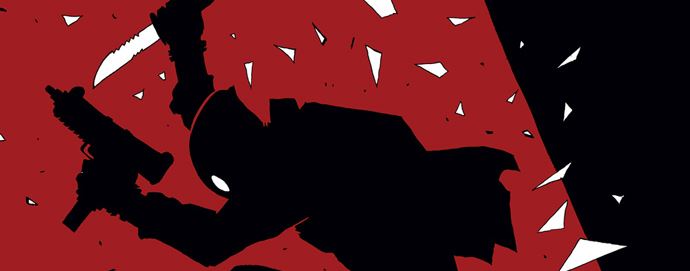
By Philip Schweier
October 21, 2015 - 11:13
I appreciate the underdog, and currently in comics, Dark
Circle is a company trying its hardest to carve a niche for itself. It is an
imprint of Archie Comics, Dark Circle is a re-branding of Red Circle, a
short-lived imprint launched in the early 1980s.
It published long dormant characters such as the Shield, the Web, and the Black
Hood. Later, the characters were licensed to DC Comics, but to limited success.
Archie Comics eventually reclaimed them, and over the past year, it has revived
the Red Circle line of properties with darker and more mature storylines, hence
the name change.
The Black Hood is the story of a Philadelphia police officer
named Greg Hettinger. After being disfigured in a gunfight, he develops an
addiction to painkillers, and while under their influence he adopts the
vigilante persona of the Black Hood. Framed by a local drug lord, he pursues an
investigation to clear his name and take down the criminal empire.
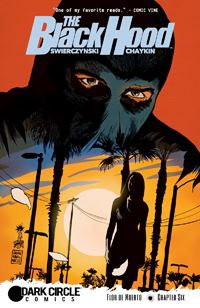
Issue #6 of the series begins with Hettinger in a rehab facility in California.
While there, another resident approaches him, seeking protection from a
possible assassin. Hettinger once more becomes the Black Hood in an effort to
suss out the truth in an environment of less-than-credible people.
This was my first exposure to the modern take on the Black Hood, so
certain elements may have slipped past me. Part of the story is told through
the use of letters – or emails, maybe – to Hettinger’s confidant back home. I
found the device helpful in understanding the nature of character. Rather than
an individual who decides, “I will put on a mask and fight crime,” Hettinger is
clearly an ordinary person, with flaws, as well as a desire make a difference
for those in trouble. The hood is a weapon of sorts, empowering him to function
outside normal channels.
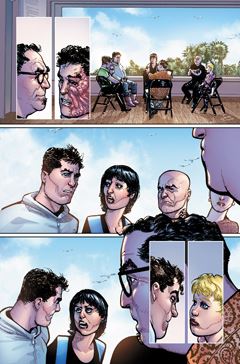
Duane Swiercynski writes an emotional story, with a strong grounding in the
truth of dealing with addiction and similar struggles. At the same time, there
is an element of mystery, all in a compact done-in-one package. It something
seldom seen these days, and refreshing. I doubt many writers could have pulled
it off so effectively.
The art is by Howard Chaykin, who has reputation for a very real-world approach
to his comic book storytelling. He is a perfect choice for this story, and just
by his association alone, there is an added layer of realism that elevates this
comic book above the typical super-hero fare.
The Hangman is a new entry in the Dark Circle stable of
characters. As the name implies, he is more of an executioner than a
super-hero. He is described as, “an urban legend. A spook story told to scare
criminals straight. But those who encounter him know different. They know that
when he comes for you… you’re dead already.” The Hangman has a near mystical
ability to discern the guilty from the innocent.
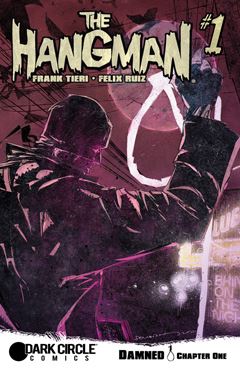
In the first issue, writer Frank Tieri introduces readers to Mike Minetta –
husband, father, and mob hitman. He is on a particularly brutal job when he
encounters the Hangman who determines Minetta is beyond redemption. But as the
story winds down, a mysterious process takes place, and what becomes of the
Hangman becomes a mystery to be explored in subsequent issues.
Artwork is by Felix Ruiz, with whose work I have been unfamiliar.
It reminds me of Denys Cowan’s, and has an almost gritty look well-suited for a
crime/horror title.
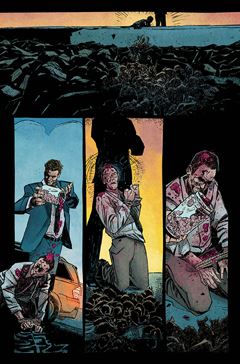
The Hangman #1 is a compelling debut, and goes beyond simply introducing
the character. It leaves a number of questions unanswered, and suggests the
character is somewhat akin to DC’s Spectre. However, I am optimistic subsequent
issues will take the concept in a different direction. My curiosity is piqued,
and I look forward to learning where it will lead.